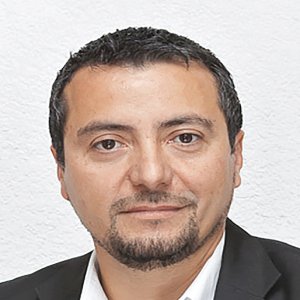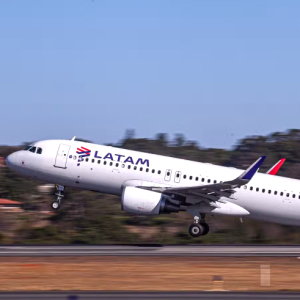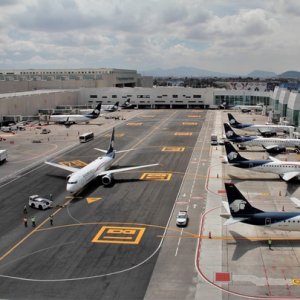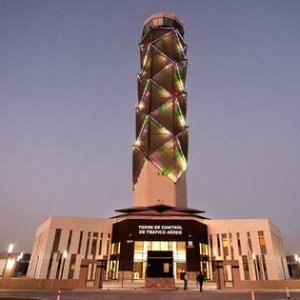Technology Plays Strategic Role in Airports

STORY INLINE POST
Q: How do different regions compare when adopting new technologies and their implementation?
A: SITA’s mission is to serve the air transport industry. In that context, several years ago we created an initiative called Intelligent Airport, focused on three main pillars. One is mobility and the way it is impacting how airlines and airports support passengers, baggage and cargo processing. The second is self-service to streamline passenger and baggage processing. The third is collaboration among the various stakeholders involved in the airport ecosystem, enabling airports and airlines to automate regular operations and to manage disruptions effectively by performing predictive analysis.
Now we are implementing this vision and seeing its impact firsthand. In Europe, for example, adoption of new technology has been historically more rapid, especially for introducing efficiencies and mitigating labor costs. In Latin America and the Caribbean, the adoption curve is different, as the objective is to rationalize the introduction of new technology according to the particular context of each individual airport. Given passenger growth in Latin America during the last decade there have been unique opportunities to modernize the airport infrastructure associated with new terminal expansions. Mexico is an example of the pressures and opportunities created by industry growth.
SITA has been working with major airlines in the country for many years, introducing new technologies as they are released. The new Terminal 4 in Cancun is being built with a vision of being the “terminal of the future” with a complete set of state of the art technologies. Mexico has become an early adopter of new technology, and the design of the new airport for the capital, NAICM, promises to be a cornerstone of this vision, with its goal to be the most technically advanced airport in the region.
Q: How does the aviation industry influence economic development?
A: There is a direct link between growth in the air transport industry and enhancing economic development in a particular country. NAICM is in a unique position to become an important international hub. Its underlying design principles are oriented toward introducing flexibility to support new processes. In addition, the plan to build an “Aerotropolis” concept around NAICM will produce an important economic engine, with convention centers, hotels and other developments that will create a multimodal platform to ensure the airport is promoted as a destination not only for passengers but for the general public. Cargo is another important element to consider. This gives a perspective on how processes can trigger economic development for a country.
Q: In what ways can SITA help to streamline passenger processing?
A: One of our solutions is the incorporation of biometrics into self-service and the creation of a single passenger token to simplify the flow of passengers at every step of the journey, called SmartPath. By introducing these technologies, queue times and end-to-end processing can be reduced substantially. We are confident that NAICM will include these technologies as part of its design. Our role has been to work with the airlines operating in Mexico, as well as the supporting organizations like the Airports Council International (ACI) and CANAERO and the associated entities involved in the design and construction process, to ensure best practices are incorporated early enough so that the airport opens in 2020 as a “future-proof” airport.
Q: How is SITA ensuring that sensitive information is protected from hackers and malware?
A: Our owners, the Air Transport Industry, have given SITA a mandate to develop innovative solutions that address community needs. These needs directly relate to physical and cybersecurity.
In regards to physical security and secure operations, we have leveraged our technology, capabilities, experience and our understanding of the air transport ecosystem at the airport together with our customers and industry partners to provide an Airport Control Center (AOCC) solution.
This solution integrates airport operational processes with technology, across multiple stakeholders, to safely improve airport and airline performance, reduce costs and delays and improve the passenger experience.
Regarding cybersecurity, we have taken a leadership role in the industry to create a working group called the Aviation Cybersecurity Group. The group is made up of the leading players in the air transport industry. We also participate in different working groups with organizations such as IATA and ACI to make sure we introduce the appropriate standards to cover cybersecurity in the industry.
Q: What innovative technologies are you introducing to airports?
A: We operate in over 1,000 airports around the world. We have several success stories that demonstrate why we are industry leaders in Latin America and in particular in Mexico for the last several decades. It is critical that airports recognize the strategic role of technology in airport development and their associated airport master plans.
As the industry evolves, the need for integration is paramount. The way of consuming technology at an airport is changing substantially. Technology has become a strategic component of an airport master plan because it generates operational efficiencies that are directly related to the airport’s bottom line, optimizing assets and reducing the need for investment. Airports also are better understanding how technology can be used to generate revenues, using common infrastructure to generate efficiencies, and increasingly commercializing the airport environment. Providing more personalization for customers allows airlines to capitalize on their investment by creating the right marketing platforms. When adding to this the idea of the “Aerotropolis,” airports can then serve this ecosystem and create revenue from it, reducing aeronautical fees and becoming more competitive.
In terms of “greenfield” airports, like the one in Mexico City, we have participated in a great number of projects globally, delivering new terminals and new airports managed under our Master Systems Integration (MSI) methodology, which consisted of the core airport management system combined with a variety of other passenger and baggage solutions. Our Airport MSI solution incorporates a full range of airport technology and the program management capability to deliver an end-to-end integrated solution. Through Airport MSI, SITA brings together all the technology suppliers into a single program of works that integrates into, and informs, the airport’s master building plan. This is one of the key success factors to delivering airport construction projects on time and on budget.
Q: What specific systems will you put in place in the NAICM to ensure it is more efficient than AICM?
A: When examining business processes, there still are significant areas of improvement to be introduced into the new airport. Common use infrastructure is key to ensuring an efficient use of resources benefiting both airports and airlines by introducing efficiencies and reducing costs. Improvements must also be made in terms of passenger flow and baggage processing. In terms of ongoing operations, effectively managing airport resources and the airport capacity to react real-time to disruptions is imperative. The introduction of Business Intelligence, Collaborative Decision Making (ACDM), an effective and integrated Airport Management System (AODB/ AMS), and a centralized, secure and integrated Airport Operational Control Center (AOCC) are imperative.
It is extremely important that GACM chooses the right technology partner to lead the way on this journey, not just during the design and implementation of the new airport but also during the ongoing operations including its continuous improvement.
Q: What kind of partnerships need to be created for the project to be successful?
A: There are different layers of partnerships. When examining the key success factors of a project of this magnitude, collaboration is extremely important. I was pleased to see the new airport has taken that message to heart and has been working closely with national and international airlines and other relevant stakeholders to ensure all input and requirements have been taken into consideration. In addition, effective communication with the relevant government organizations is important, given that changes in public policy are required to streamline the passenger and baggage processes.
Mexico was one of the first countries in the region to privatize airport concessions and operators like ASUR, GAP and OMA have been very successful. NAICM must decide to what extent it wants to involve private partnerships to leverage expertise in some areas. In regards to technology, SITA is working to be the partner of choice to GACM. Our sole objective is to harness the power of technology to simplify air travel and to provide benefits to all the stakeholders involved in this process along the way. We are passionate about the challenges and opportunities of new airport design and the underlying impact of the introduction of new technology in the industry. The success of NAICM is extremely important to SITA.























